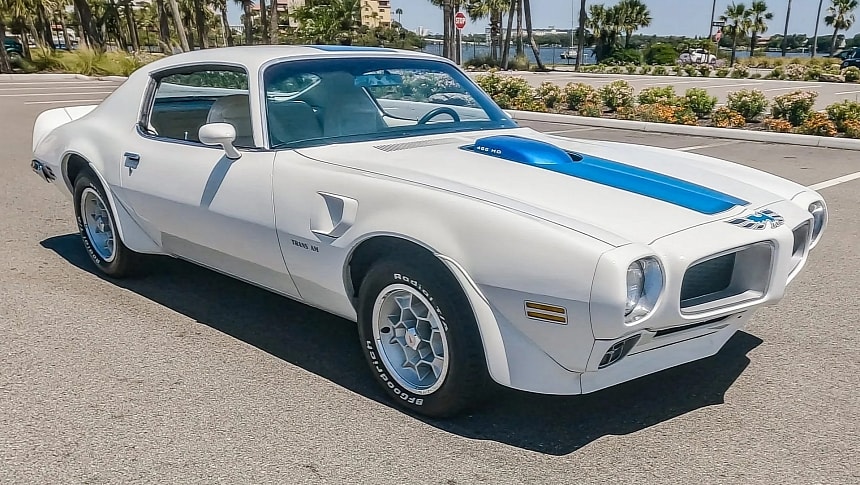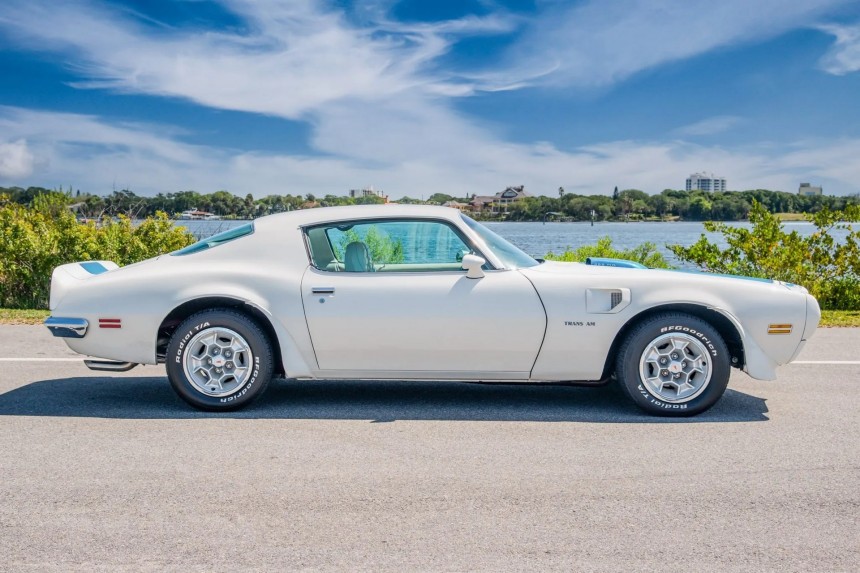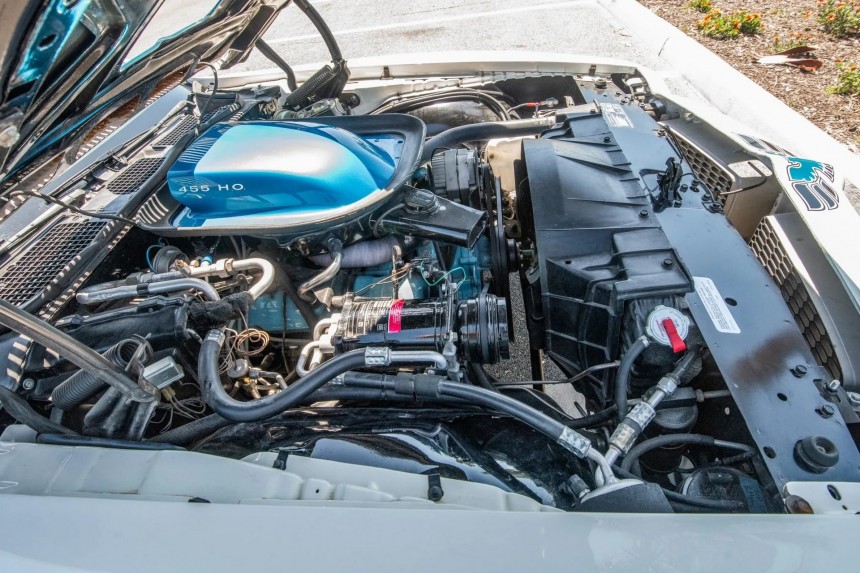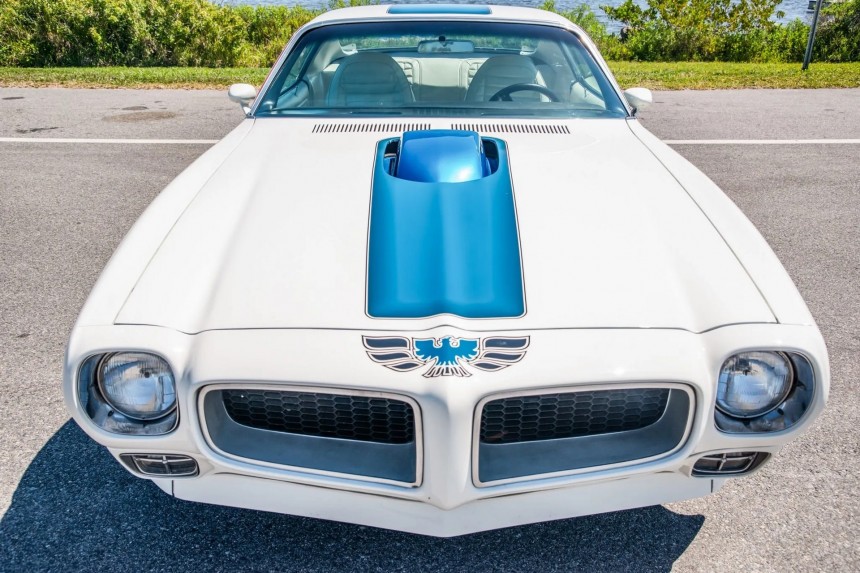For many, the best-looking Pontiac is a Firebird – a particular Firebird, to be exact: the 1972 Trans Am, the car that almost wasn’t. Due to a GM workers’ strike, the corporation considered dropping the twin cousin pony cars from its Chevrolet and Pontiac divisions, the Camaro and Firebird. Luckily, the nameplates soldiered on, eventually finding themselves alone in the pony car field toward the middle and late seventies.
The pony car from the creators of the muscle car got a redesign in 1970 when the second generation debuted, and the basic cues stayed mostly untouched until 1973. But looks alone weren’t a selling point for a model that advocated big brawn and muscle-flexing demeanor. The Trans Am was the top gun in its family, really putting the ‘fire’ in the Firebird. By 1972, however, things were getting complicated, and it was obvious even to white-cane pedestrians that something big was coming.
1972 was the first year after the second-gen Hemi era (the reputed powerhouse had been canceled at the end of the model year 1971), and that was alarm signal enough. The Golden Age was coming to a full stop, with several major changes unwrapped for the worse. First, the performance rating shift from SAE gross to net effectively shaved off horsepower and torque numbers.
Although only illusional, the downgrading was desolating, even if the engines themselves had not been tampered with. The big hit was the EPA and the Clean Air Act of 1970 (31st of December), which muffled performance to tackle pollution, global warming, and other environmental topics. Lead was banned from gasoline, so engines had to adjust accordingly – compression ratios dropped a few orders of magnitude, as did horsepower.
Pontiac played its cards nicely in 1970 when everyone in Detroit was engaged in a category-five horsepower shootout. Since General Motors lifted the ban on displacement, the big engines from GM were given the ‘Fire at will!’ order. Chevrolet put out the 454 big-inch (?7.4 liters), and Pontiac and Buick upped the ante by one cubic inch, resulting in the formidable 455 V8s (7.5 liters).
When the clouds of smog-fighting federal measures began looming over engine bays, the big Pontiac engine was offered as standard in the 1972 Trans Am, mated to a four-speed manual transmission. Also, the champion of displacement was given the High Output magic spell, allowing the colossal motor to spit out 300 hp and 415 lb-ft (304 PS, 563 Nm). As installed, with all auxiliaries attached – that was the Society of Automotive Engineering's new groove for 1972.
The then-new Environmental Protection Agency wasn’t the only enemy on the horizon for performance cars. Insurance companies began taxing smiles per gallon as if it were illicit substances, so carmakers dialed back their advertised ratings to keep some of their customers close. In the Trans Am’s case, the Norwood assembly plant walk-out was the straw that should have broken the camel’s back.
Only 1,286 examples were assembled for the 1972 model year, a direct result of the 174-day cease-labor protest between April 7 and September 27, 1972. The low-production model is the last Trans Am armed with the big 455 H.O. engine, the torque ogre that could have just as easily found a permanent job in a locomotive or a tugboat. Because of its oversquare architecture (4.15-inch bore x 4.21-inch stroke / 105.41 mm x 106.93 mm), it scooped out torque in tidal waves.
Nonetheless, performance was outlawed by the end of 1972, and the big engine went to keep the Hemi good company. Before its departure, it imbued the rare Trans Am with its eight-cylinder might, which could be had with a Turbo Hydra-Matic 400 three-speed automatic of the M22 four-speed close ratio Rock Crusher manual transmission. Apparently, the three pedals weren’t to the public’s taste anymore since only 458 buyers opted for the strictly stick shift capacity (which was standard, by the way). The rest of them, 828, came with the hassle-free automatic.
The signature shaker hood scoop with its 455 H.O. decals (for High Output) is one of the unmistakable telltale signs of a Trans Am (the deck lid spoiler would be another). Dual sport mirrors, flared fenders, an air dam up front, functional heat extractors in the front fenders, and the ‘Trans Am’ scripting at the back and behind the front wheels were all there for everyone to see.
What was less visible to the naked eye was the one-year-only cylinder head, the7F6 with roundish ports, 111 cubic-centimeter combustion chambers, and big 2.11-inch / 53.59-mm intake valves (the exhaust ones measured 1.77 inches / 44.95 in diameter). Despite the lowly 8.4 compression, the 455 cubic-inch Pontiac V8 still had enough life in it to cope with a 3.42 gearing on the rear axle.
The big V8 was not a high-revving tornado, despite what the tachometer claimed with its 8,000 RPM dial (the redline mark sat just below the 5,750-RPM mark, and the caution point was set at 5,250). The speedometer was equally optimistic with its 160-mph scale. Still, the dashboard had a distinct appeal with its engine-turned ornamentation on the silver metallic panel and the simple, easy-to-read gauges.
Naturally, the rare bird Firebird Trans Am from 1972 is an M22-equipped, but how about this great-looking automatic example with 53,540 original miles (86,164 km) on its original engine, transmission, and Safe-T-Track differential? To top all of that off, there’s a very expensive factory option – the air conditioning that set back the buyer a hefty $407 (the base price for the car was $4,386. The customer added another $716 in extras, with the climate controlling system accounting for more than half of the price of all add-ons).
It’s still six days into the making of a bidding war, with the current high-water mark at $33,333. It had a repaint some years back, but that’s about it (or at least what the seller says). Marque enthusiasts expect six figures before this car changes hands, but this prophecy might be over-hyped. The public sale value for a 1972 Trans Ams has crossed the $100,000 barrier just once in the past five years (with $123,200) and a low point of $48,000.
1972 was the first year after the second-gen Hemi era (the reputed powerhouse had been canceled at the end of the model year 1971), and that was alarm signal enough. The Golden Age was coming to a full stop, with several major changes unwrapped for the worse. First, the performance rating shift from SAE gross to net effectively shaved off horsepower and torque numbers.
Although only illusional, the downgrading was desolating, even if the engines themselves had not been tampered with. The big hit was the EPA and the Clean Air Act of 1970 (31st of December), which muffled performance to tackle pollution, global warming, and other environmental topics. Lead was banned from gasoline, so engines had to adjust accordingly – compression ratios dropped a few orders of magnitude, as did horsepower.
When the clouds of smog-fighting federal measures began looming over engine bays, the big Pontiac engine was offered as standard in the 1972 Trans Am, mated to a four-speed manual transmission. Also, the champion of displacement was given the High Output magic spell, allowing the colossal motor to spit out 300 hp and 415 lb-ft (304 PS, 563 Nm). As installed, with all auxiliaries attached – that was the Society of Automotive Engineering's new groove for 1972.
The then-new Environmental Protection Agency wasn’t the only enemy on the horizon for performance cars. Insurance companies began taxing smiles per gallon as if it were illicit substances, so carmakers dialed back their advertised ratings to keep some of their customers close. In the Trans Am’s case, the Norwood assembly plant walk-out was the straw that should have broken the camel’s back.
Nonetheless, performance was outlawed by the end of 1972, and the big engine went to keep the Hemi good company. Before its departure, it imbued the rare Trans Am with its eight-cylinder might, which could be had with a Turbo Hydra-Matic 400 three-speed automatic of the M22 four-speed close ratio Rock Crusher manual transmission. Apparently, the three pedals weren’t to the public’s taste anymore since only 458 buyers opted for the strictly stick shift capacity (which was standard, by the way). The rest of them, 828, came with the hassle-free automatic.
The signature shaker hood scoop with its 455 H.O. decals (for High Output) is one of the unmistakable telltale signs of a Trans Am (the deck lid spoiler would be another). Dual sport mirrors, flared fenders, an air dam up front, functional heat extractors in the front fenders, and the ‘Trans Am’ scripting at the back and behind the front wheels were all there for everyone to see.
The big V8 was not a high-revving tornado, despite what the tachometer claimed with its 8,000 RPM dial (the redline mark sat just below the 5,750-RPM mark, and the caution point was set at 5,250). The speedometer was equally optimistic with its 160-mph scale. Still, the dashboard had a distinct appeal with its engine-turned ornamentation on the silver metallic panel and the simple, easy-to-read gauges.
Naturally, the rare bird Firebird Trans Am from 1972 is an M22-equipped, but how about this great-looking automatic example with 53,540 original miles (86,164 km) on its original engine, transmission, and Safe-T-Track differential? To top all of that off, there’s a very expensive factory option – the air conditioning that set back the buyer a hefty $407 (the base price for the car was $4,386. The customer added another $716 in extras, with the climate controlling system accounting for more than half of the price of all add-ons).
It’s still six days into the making of a bidding war, with the current high-water mark at $33,333. It had a repaint some years back, but that’s about it (or at least what the seller says). Marque enthusiasts expect six figures before this car changes hands, but this prophecy might be over-hyped. The public sale value for a 1972 Trans Ams has crossed the $100,000 barrier just once in the past five years (with $123,200) and a low point of $48,000.




















